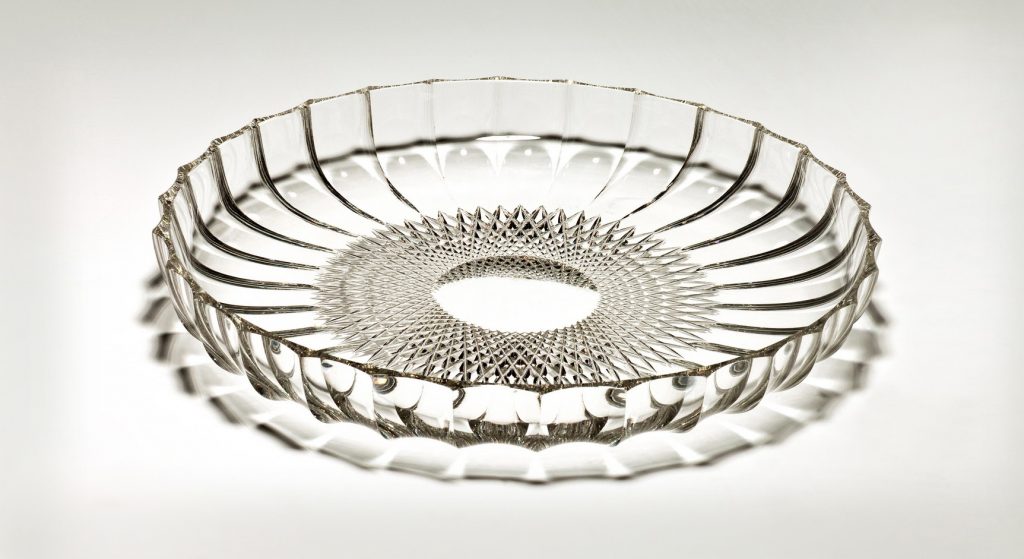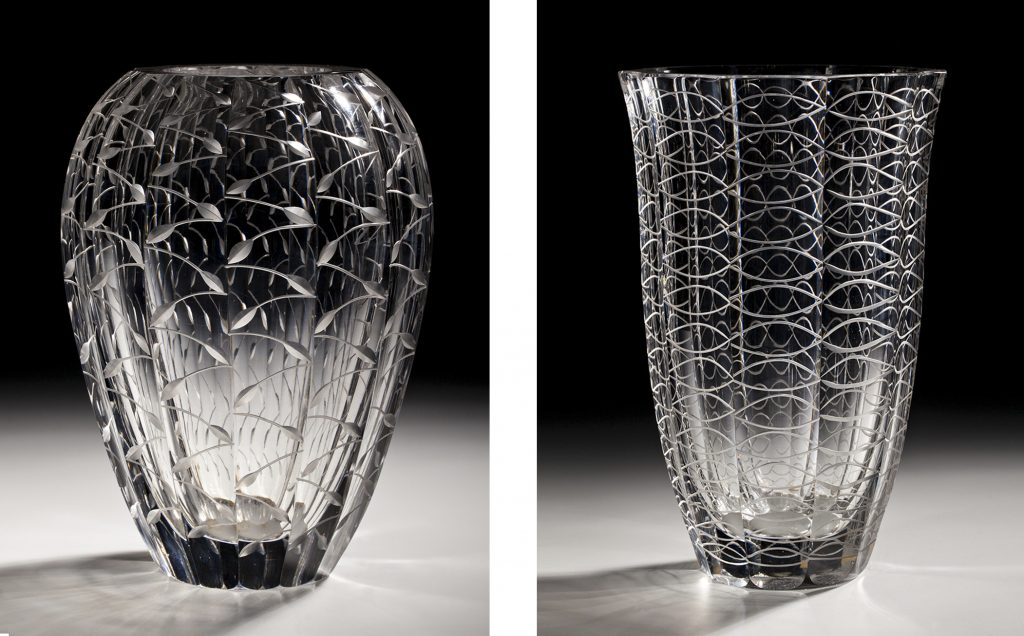
Tomaszewski is – you might say – a pedigree glazier. He feels the glass perfectly and has an incredible mastery of it. The sense and feel of the material, on the one hand, and the skill and ingenuity, on the other, have allowed the artist to create a style
of his own modelling and ornamentation. /…/
This kind of virtuosity determines the distinctiveness of Tomaszewski’s glass artefacts, which stand out in terms of class from the work
of other artists. His glass objects can easily compete with Swedish or Czech products. We are convinced by the reproductions of foreign glass that we can see in foreign magazines. It even seems that the wealth of ideas and vitality of our artist exceeds the work of many foreign artists. The value of Tomaszewski’s glass items for our production is all the greater because his glass represents the undoubted achievements of Poland in this field, different from foreign achievements, and represent our serious contribution in the field of artistic glass.
Stanisław Gebethner (1897–1984) – Custodian of the Decorative Arts Department of the National Museum in Warsaw, Art Review,
No. 5–6, 1954

MORE PHOTOS:
Lived between 1906 and 1993. He studied at the Municipal School of Decorative Arts and Painting in Warsaw, 1926–1930, and then continued his studies at the Academy of Fine Arts in Warsaw under the direction of Prof. Tadeusz Breyer (sculpture) and Prof. Tadeusz Pruszkowski (painting), with whom he obtained a diploma, 1939.
Between 1946 and 1950 he worked in the “Józefina” Glassworks (currently: the “Julia” Glassware) in Szklarska Poręba. In 1950–1952 he ran the Glass Design Studio at the State Higher School of Fine Arts (currently: the E. Geppert Academy of Art and Design) in Wrocław.
In later years, he designed glass for glassworks located near Warsaw, in Targówek, Wolomin, and Falenica. He participated in many individual exhibitions in Poland, Czechoslowakia, GDR, United Kingdom, and the USSR.
His works are to be found in many public and private collections in Poland and abroad.
He was also involved in painting, drawing and medal-making, but throughout his life he felt connected with sculpture. He was an outstanding representative of Polish artistic glass, an initiator of new trends in industrial glass design in Poland after World War II, and a laureate of prestigious awards for his artistic achievements.
Initiator of new trends in industrial glass design in post-war Poland.
Mainly he created objects from hot-moulded glass, using a tibia and tools he constructed himself. His glass sculptural compositions were inspired by organic forms, fauna and flora. His works also refered to music. He travelled a lot.
